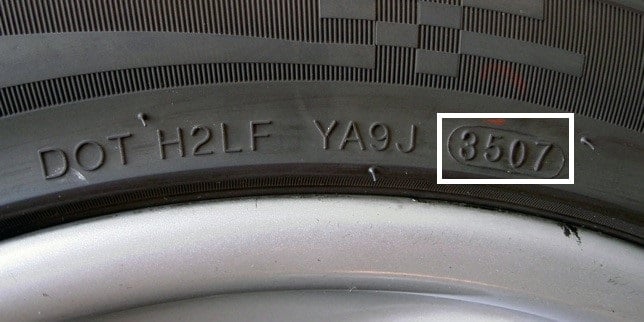Accessibility Important Services Offered in the Field With Our Exhaustive Motorcycle Tire Guide for Lovers
The Motorcycle tire overview uses crucial understandings for fanatics seeking to enhance their riding experience. It covers different tire kinds, ideal selection based upon riding designs, and crucial upkeep techniques. Motorcyclists can take advantage of recognizing tire stress and the importance of acknowledging wear indications. With this expertise, they can browse prospective issues and assure peak efficiency. There are critical facets of tire treatment that might continue to be vague, motivating more expedition.
Recognizing Various Sorts Of Motorcycle Tyres

How to Select the Right Tire for Your Riding Design
When choosing the appropriate tyre for a certain riding style, riders need to take into consideration various variables that line up with their specific preferences and the planned use of their Motorcycle. Different tyres accommodate particular problems, such as sporting activity, touring, or off-road riding. For journey bikers, dual-sport tyres with a sturdy step pattern are important for taking on both paved roads and challenging terrains. On the other hand, sportbike lovers must choose performance tyres that use superior grasp and faster handling on smooth surfaces.Additionally, environment plays a significant duty; bikers in damp regions may benefit from tires made for improved water displacement. Bikers must likewise take into consideration the tire size and account, which can influence stability and maneuverability. Ultimately, choosing the appropriate tyre includes balancing these considerations to boost comfort, safety and security, and efficiency, ensuring that each ride meets the motorcyclist's expectations and aligns with their unique design.
Crucial Tire Upkeep Tips for Longevity
Keeping Motorcycle tyres is vital for prolonging their life expectancy and making certain perfect performance when driving. Consistently examining tire stress is critical; under-inflated tires can cause enhanced wear and compromised handling. Enthusiasts ought to also keep track of tread depth, as adequate step is crucial for grip and safety.Rotating the tyres regularly helps achieve also use, particularly for those who regularly ride in varied problems. On top of that, keeping tires tidy from particles and impurities can protect against deterioration of the rubber.Another important element is ensuring that the wheels are properly lined up, as imbalance can cause uneven wear. Routine inspections for any punctures or foreign objects installed in the tires are a good idea, as very early detection can avoid further damage. Lastly, keeping the Motorcycle in a climate-controlled environment can avoid rubber deterioration, ensuring the tires remain in prime problem for longer.
Recognizing Signs of Tire Put On and Damage
Acknowledging indicators of tyre wear and damage is vital for every single Motorcycle enthusiast. Walk deepness indications offer necessary details about the staying grip, while sidewall splits can indicate deeper architectural problems (motorcycle tyre guide). Comprehending these factors aids guarantee both safety and security and efficiency when driving
Tread Depth Indicators
Step depth signs function as necessary signals for Motorcycle fanatics to examine tyre wear and damage. These markings, frequently discovered within the walk grooves, give a visual recommendation for the continuing to be step deepness. As tires use down, the step deepness diminishes, impacting traction and handling. When replacement is needed, lovers are encouraged to routinely check these indications to figure out. A tread depth of 1.6 mm is generally thought about the legal minimum; however, many riders favor to change tires earlier for perfect performance and safety and security. Keeping track of walk depth not only assures a smoother ride yet additionally improves overall safety when traveling. Recognizing these indications can greatly expand the life of a motorbike's tires and enhance riding experience.
Sidewall Cracks Evaluation
Tyre use materializes in different kinds, and sidewall fractures are among the most worrying indicators of damages that fanatics must keep an eye on carefully. These splits can happen as a result of variables such as UV exposure, inappropriate rising cost of living, and age. They might look like small fissures or bigger lacerations along the tyre's sidewall, jeopardizing architectural honesty. Lovers ought to regularly check their tires, particularly after lengthy trips or direct exposure to rough conditions. Overlooking sidewall cracks can lead to disastrous tyre failing, resulting in loss of control while riding. If any splits are found, it is recommended to consult a professional for assessment and prospective substitute (motorcycle tyre guide). Proactive monitoring assurances safety and prolongs the life expectancy of Motorcycle tyres, keeping peak efficiency on the roadway
On-the-Road Tire Repair Techniques
When a cyclist comes across a flat tire when traveling, swift and efficient repair work techniques can make all the distinction in restoring flexibility. Evaluating the damage is important; if the puncture is located on the walk and is no larger than a quarter-inch, a repair may be feasible. Bikers ought to have a tire fixing set that commonly consists of plug tools, rubber plugs, and sealant.To execute a repair, the motorcyclist has to eliminate any kind of particles from the slit and put a plug making use of the consisted of devices. Correct securing can avoid air loss and enable the rider to continue their trip. Furthermore, making use of a mobile air compressor can help inflate the tyre to a suitable pressure.If the damage is extra considerable, short-lived solutions might involve asking for roadside assistance. Mastering these on-the-road repair service methods gives cyclists with confidence during unexpected tire problems.
The Value of Tire Stress and Its Effect on Performance
Tire stress plays a vital role in Motorcycle efficiency, influencing handling and safety. Keeping perfect pressure levels guarantees better contact with the road, improving stability during trips. On the other hand, wrong tyre stress can cause diminished managing capacities and raised wear on tyres.
Optimum Pressure Degrees
Maintaining ideal pressure degrees is necessary for ensuring a motorbike's efficiency and safety. Tyre pressure straight affects gas effectiveness, stopping range, and total ride comfort. Over-inflated tyres can lead like this to reduced call with the roadway surface area, jeopardizing grip, while under-inflated tyres might create extreme wear and increase the risk of blowouts. Producers usually advise details pressure degrees that differ based upon the Motorcycle kind and load problems. Routine checks, ideally soon adventures, help bikers maintain optimal pressure. Using a reputable gauge guarantees precision, as minor variances can considerably impact performance. By adhering to suggested stress degrees, motorcyclists can improve their riding experience, ensuring both pleasure and security on the roadway.
Results on Dealing with
Although commonly forgotten, the exact upkeep of tyre stress plays a vital duty in Motorcycle handling and performance. Correct tire pressure assurances ideal contact with the road surface, boosting grip and security throughout velocity, braking, and cornering. Under-inflated tires can bring about increased rolling resistance, influencing gas efficiency and reaction times, while over-inflated tyres may decrease the contact spot, jeopardizing grip. In addition, wrong stress can result in unequal tyre wear, reducing total lifespan. Riders may experience lessened control and boosted risk of crashes because of these variables. Frequently checking and changing tyre pressure according to producer requirements not just improves handling yet also adds to a safer riding experience, assuring that the Motorcycle carries out at its best under numerous conditions.
When to Seek Professional Assistance for Tyre Issues
When should a bike enthusiast think about seeking expert help for tyre concerns? There are a number of scenarios that require the experience of a specialist. If the tyre exhibits visible damages such as cuts, bulges, or punctures, instant examination is vital. Second, unusual wear patterns, which might indicate placement or suspension issues, ought to prompt appointment. Additionally, if the tyre stress regularly changes, this might indicate a leak or other issues requiring expert intervention.Moreover, lovers might not have the required tools or knowledge for tasks such as tyre installing, balancing, or fixings. In instances of persistent resonances or taking care of concerns, a specialist's analysis can help assure security and efficiency. When in question, looking for specialist assistance is always recommended, as riding on endangered tyres can lead to unsafe circumstances. Focusing on safety and efficiency is necessary for any Motorcycle lover.
Frequently Asked Inquiries
How Often Should I Change My Motorcycle Tyres?
The regularity of Motorcycle tire replacement relies on factors such as mileage, step wear, and riding conditions. Generally, tyres should be replaced every 5,000 to 10,000 miles, or sooner if significant wear is evident.

Can I Mix Different Tire Brands on My Motorcycle?
Blending various tyre brands on a motorbike is usually not suggested (motorcycle tyre guide). Variations in design, walk patterns, and substances can affect handling and stability, possibly jeopardizing safety. It is best to utilize matching tires for peak performance
What Is the Suitable Tire Stress for My Bike?
The optimal tire pressure for a bike varies by design and riding conditions. Typically, producers suggest examining the proprietor's handbook, ensuring ideal efficiency, security, and tire long life. Normal upkeep is important for preserving appropriate stress.
Exist Particular Tyres for Different Climate Issues?
Various climate condition require certain tyre types. Wet problems profit useful source from tires with much deeper treads for much better hold, while summertime tires improve efficiency in completely dry weather condition. Picking appropriately guarantees safety and perfect handling throughout the year.
Exactly how Do I Properly Store Motorcycle Tyres When Not Being Used?
Correct storage of Motorcycle tyres includes maintaining them in a great, dry area far from direct sunshine. They ought to be kept upright or stacked, ensuring they remain totally free and tidy from hefty things that might create distortion. Journey tires bridge the void between on-road and off-road abilities, providing convenience for motorcyclists who check out diverse environments.Additionally, cruiser tires stress a smooth ride and security, tailored for larger bikes. Frequently inspecting tire pressure is important; under-inflated tires can lead to raised wear and endangered handling. Over-inflated tyres can lead to decreased call with the road surface area, compromising traction, while under-inflated tires might trigger too much wear and enhance the threat of blowouts. In addition, if the tire pressure frequently fluctuates, this may signify a leakage or other complications needing specialist intervention.Moreover, lovers might not possess the required tools or competence for jobs such as tyre learn the facts here now installing, balancing, or fixings. Wet problems profit from tires with much deeper footsteps for much better grip, while summertime tires boost performance in completely dry climate.